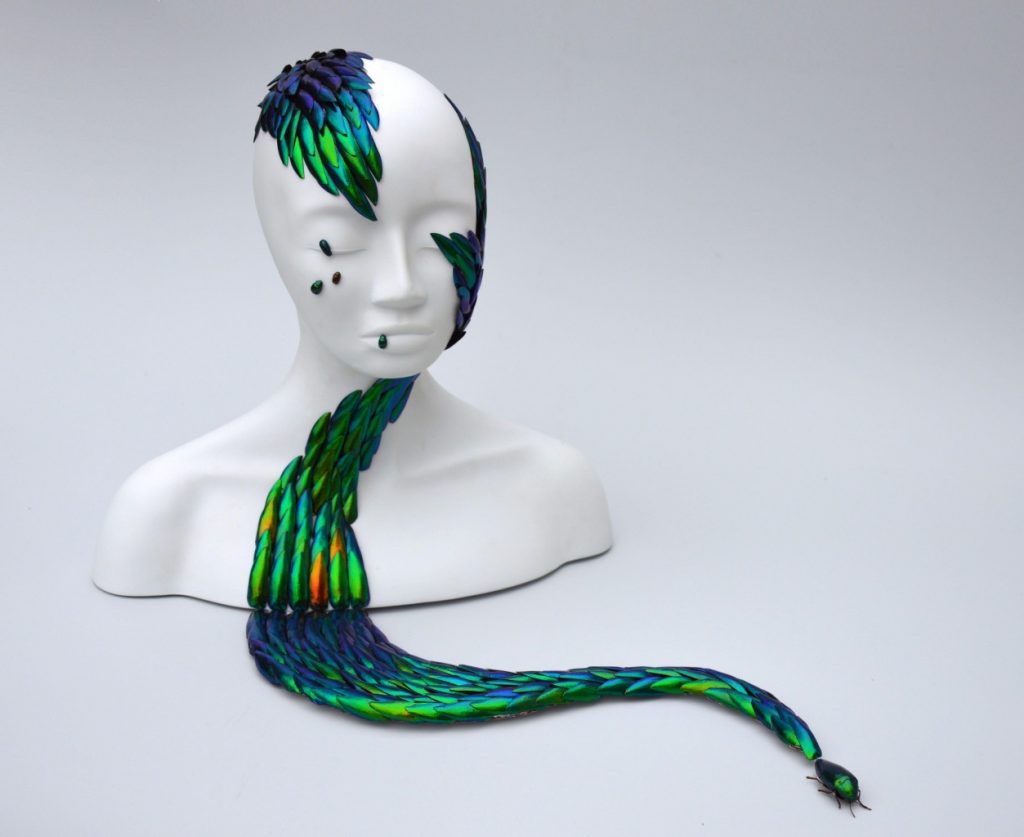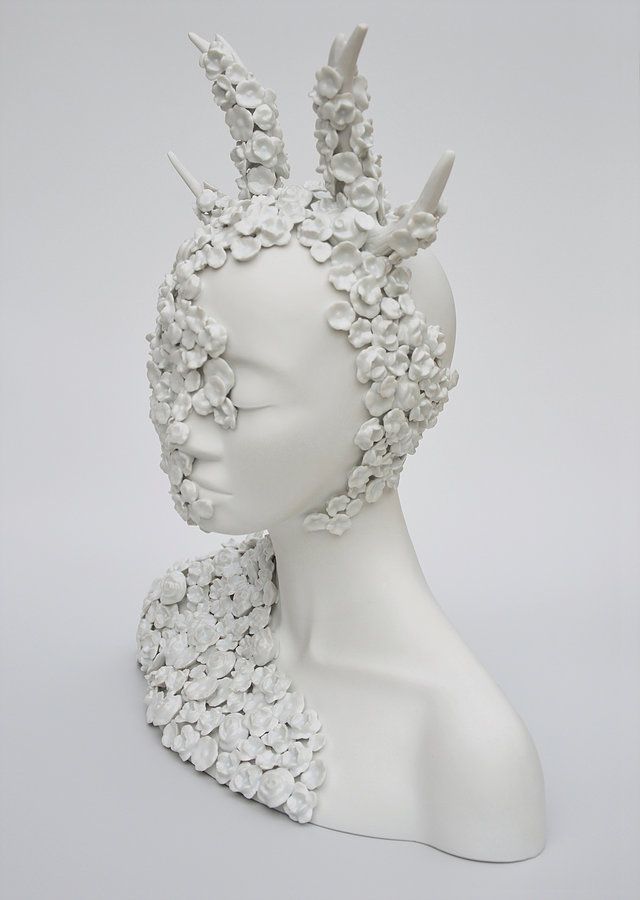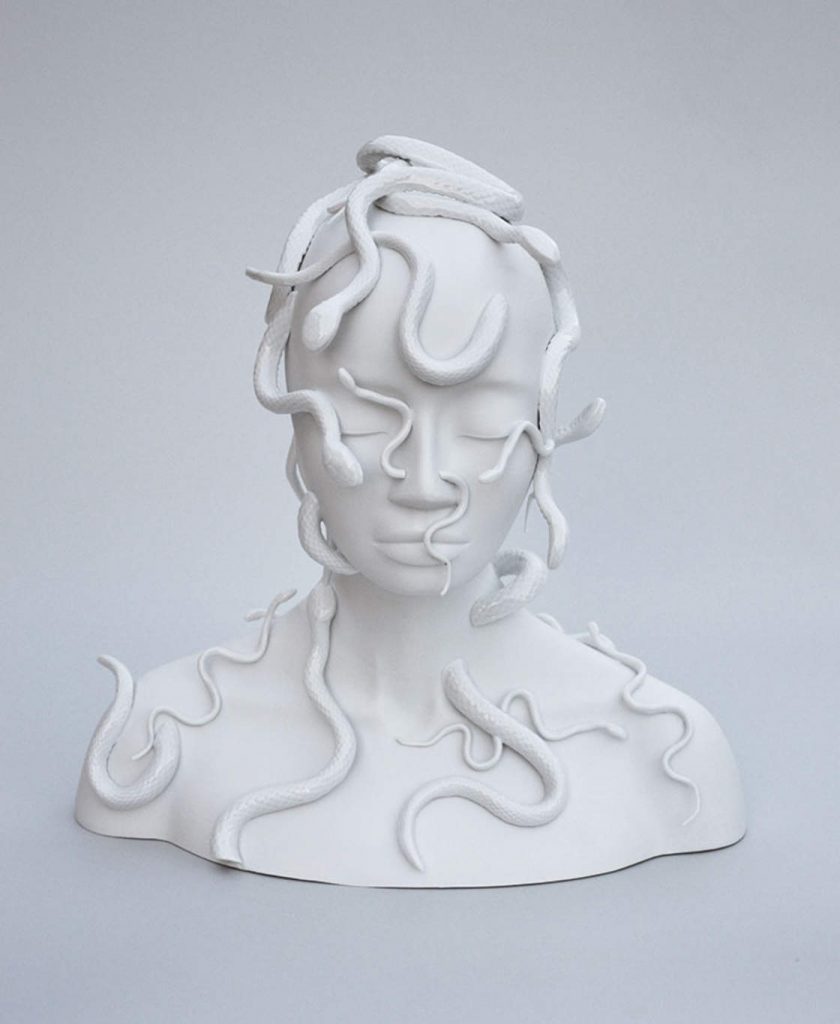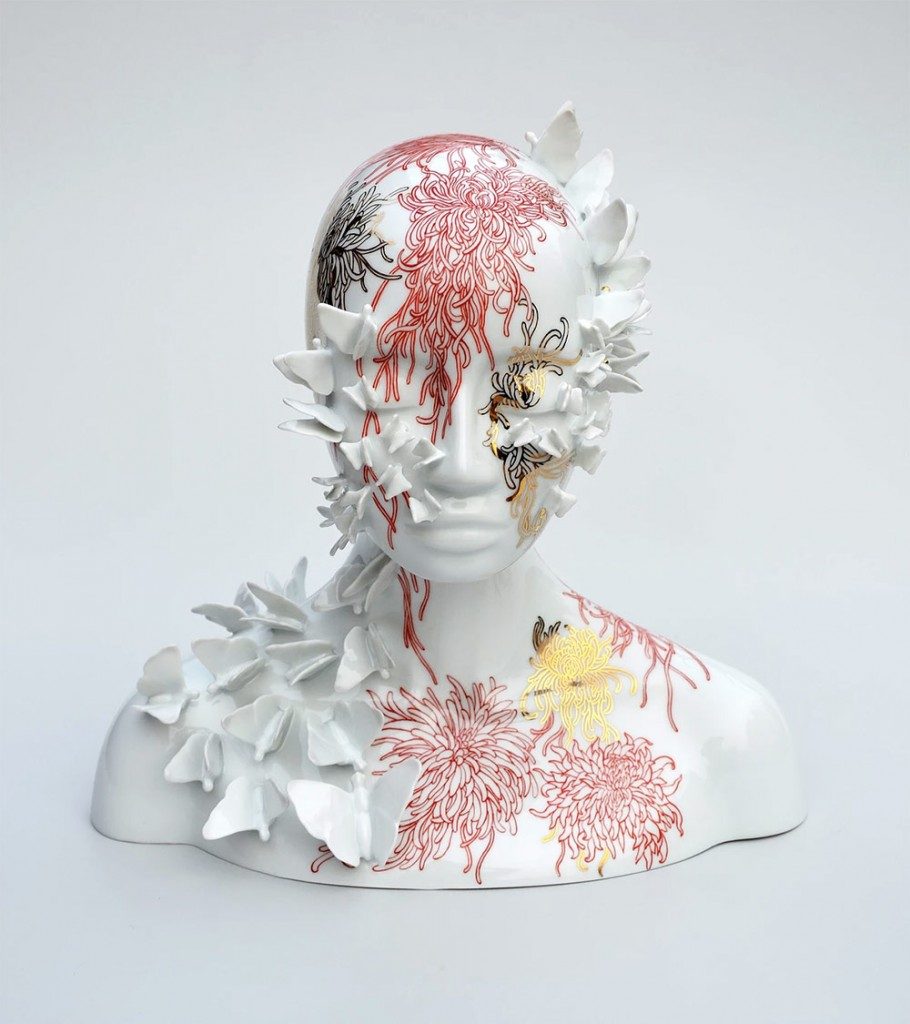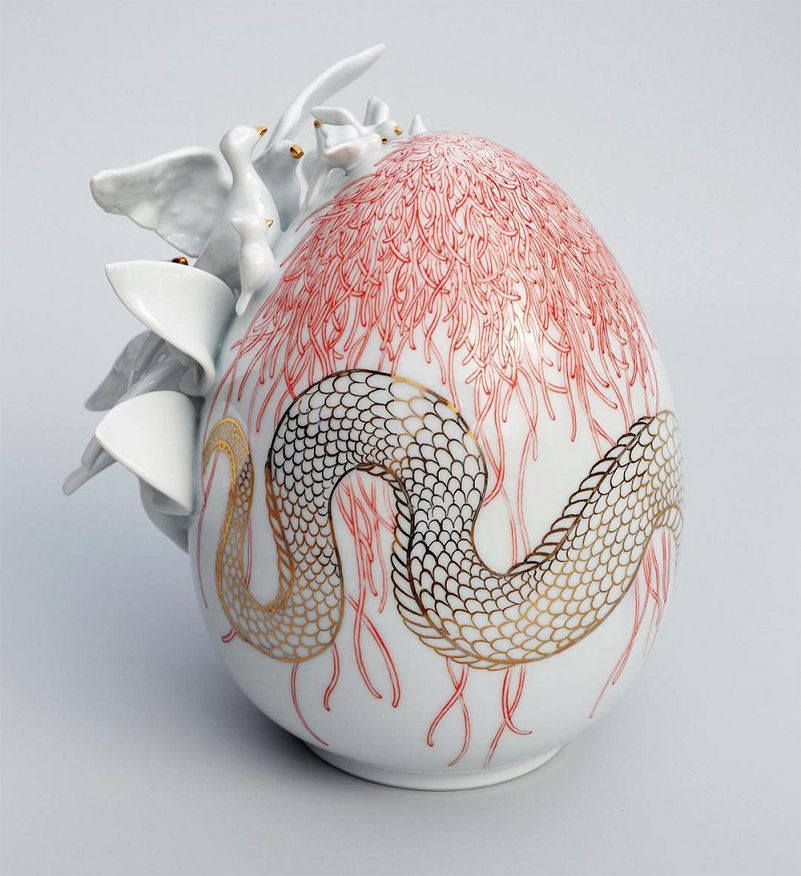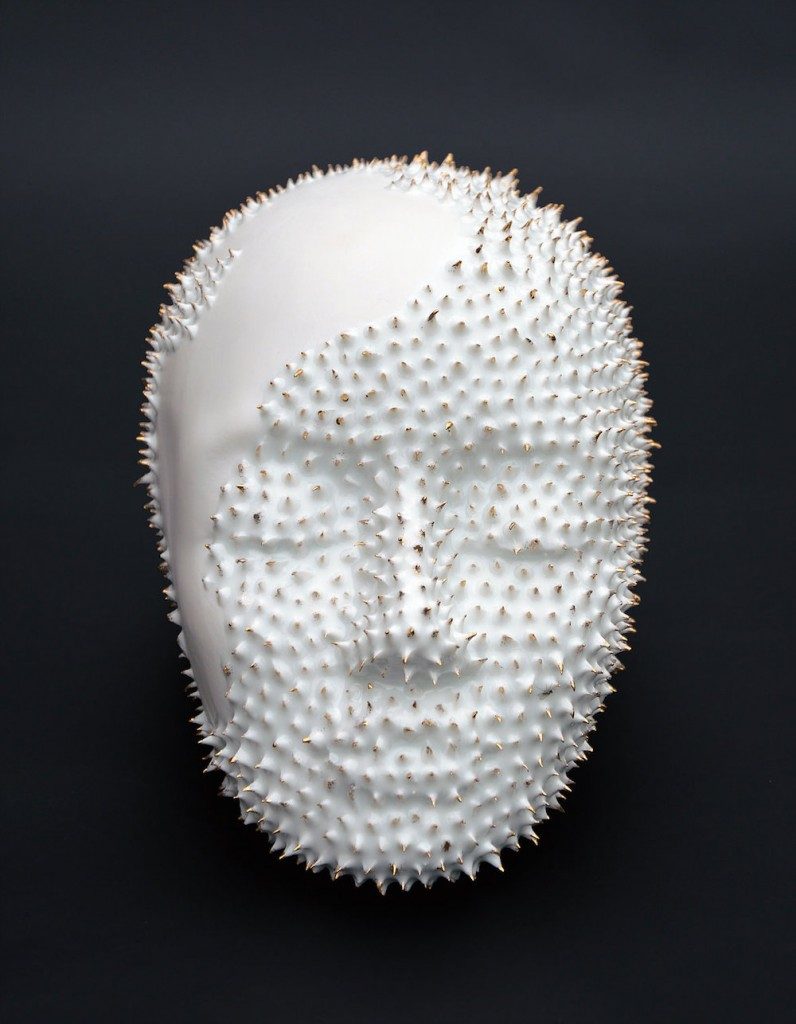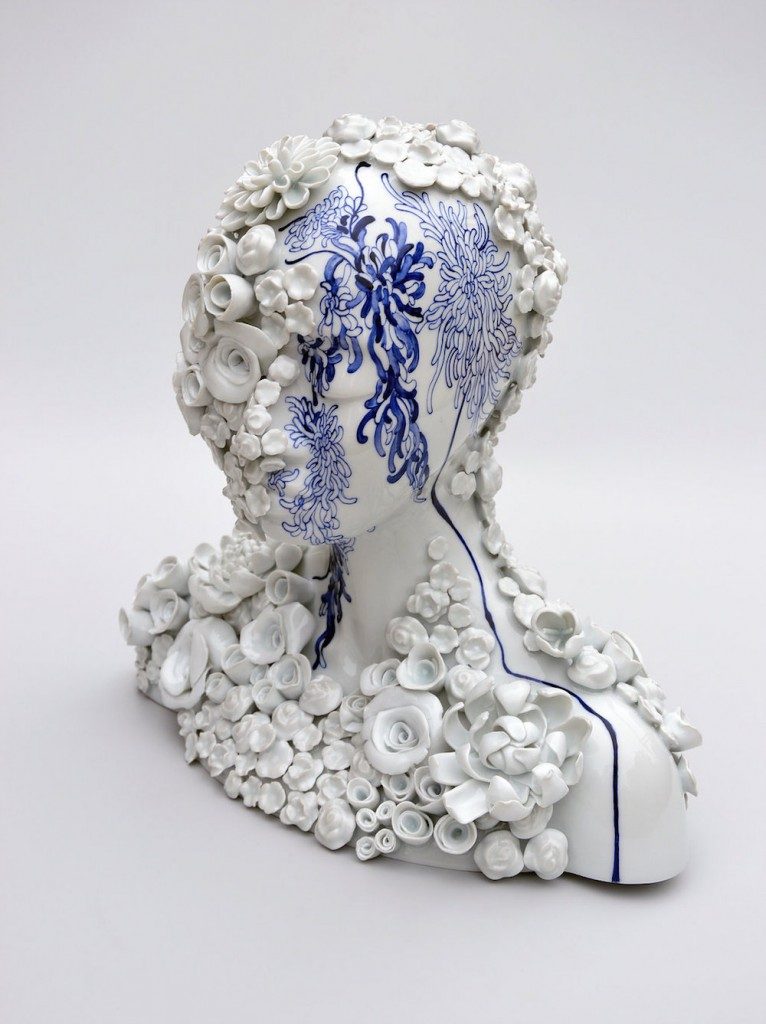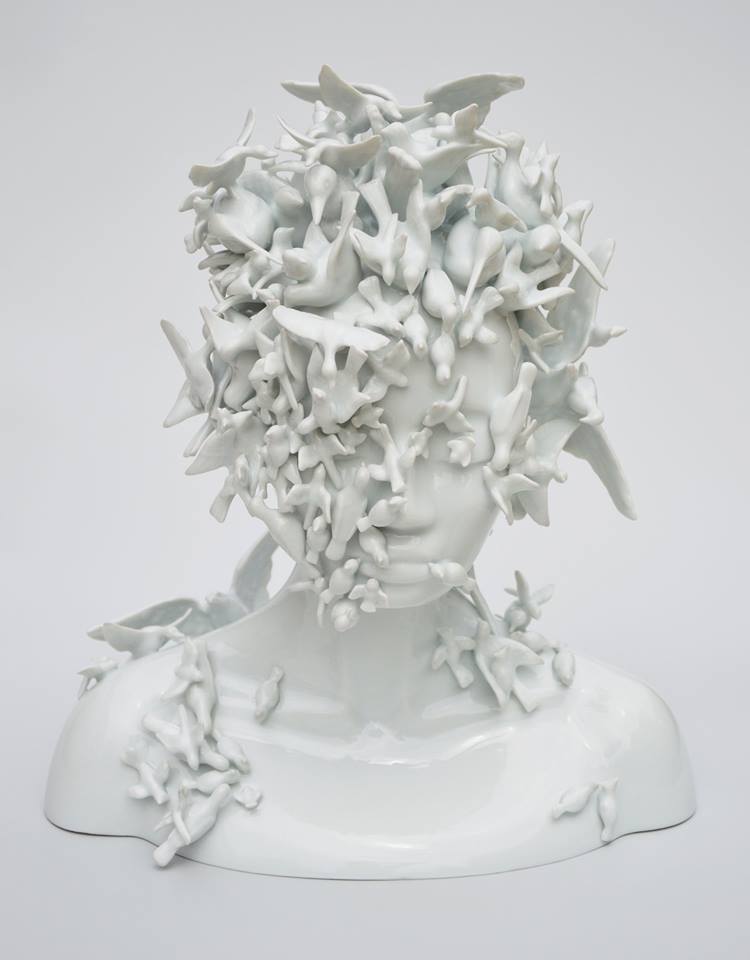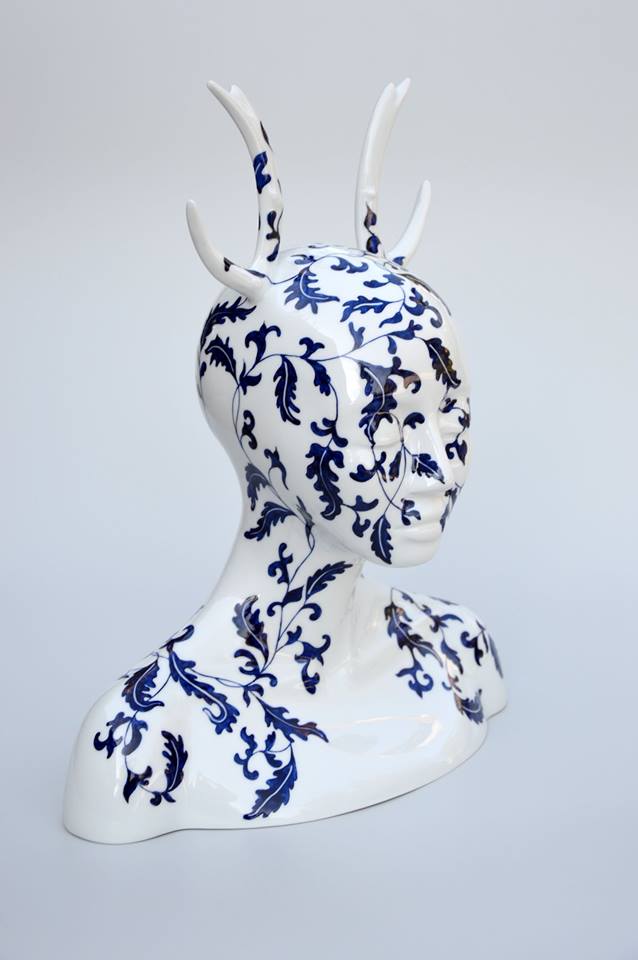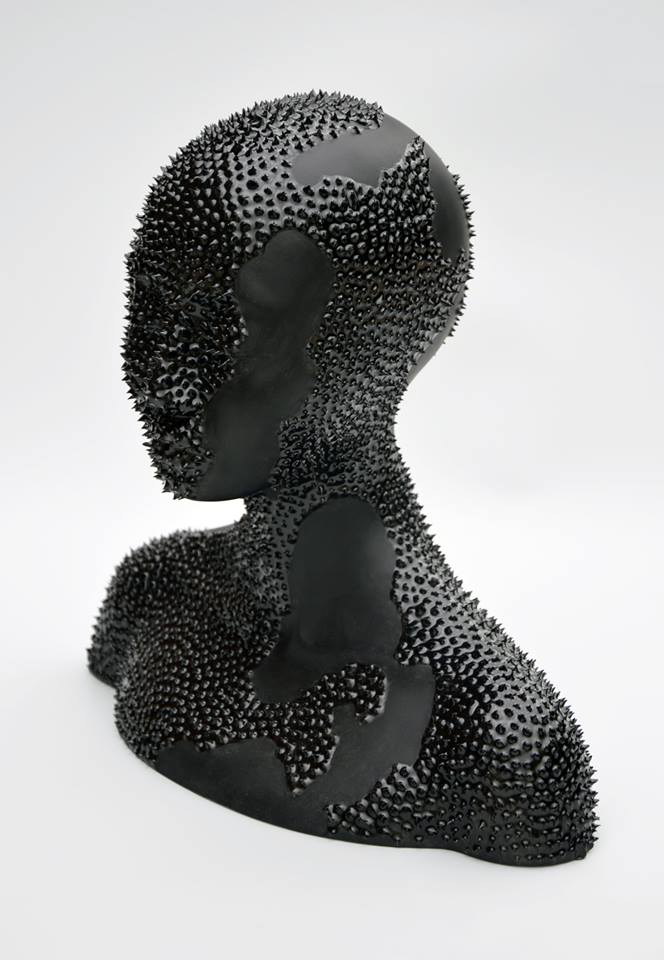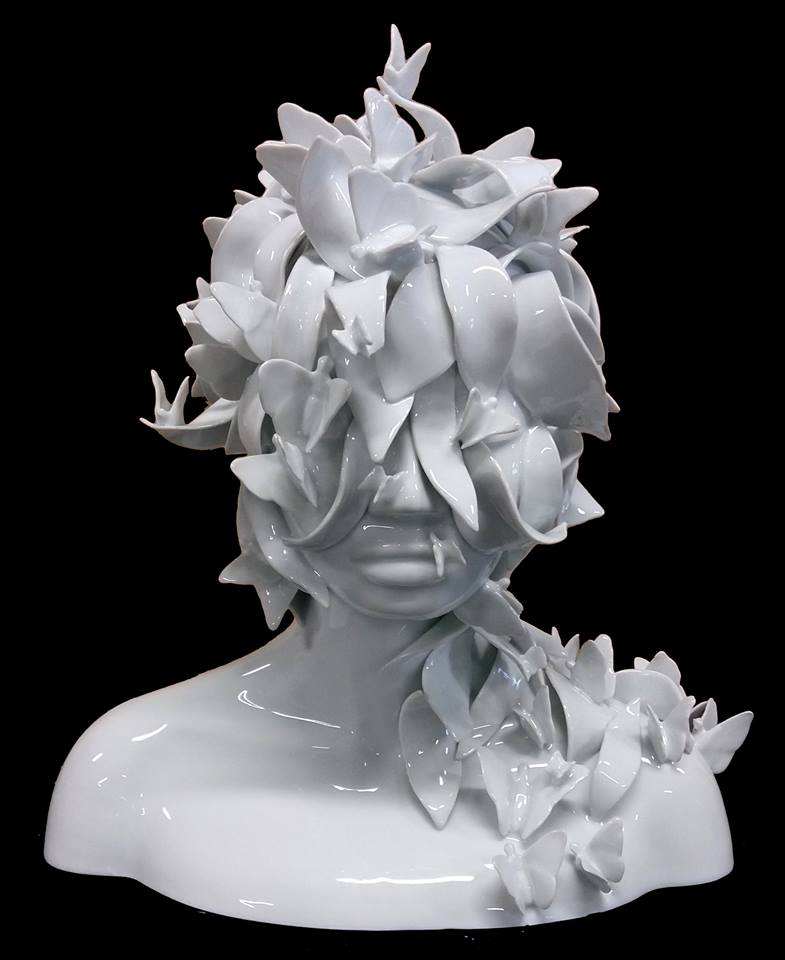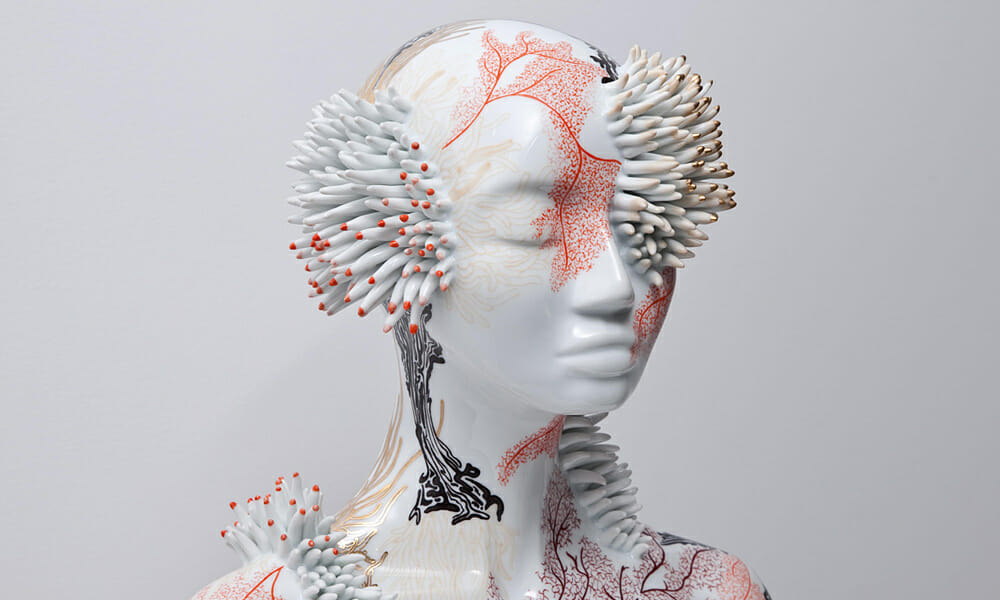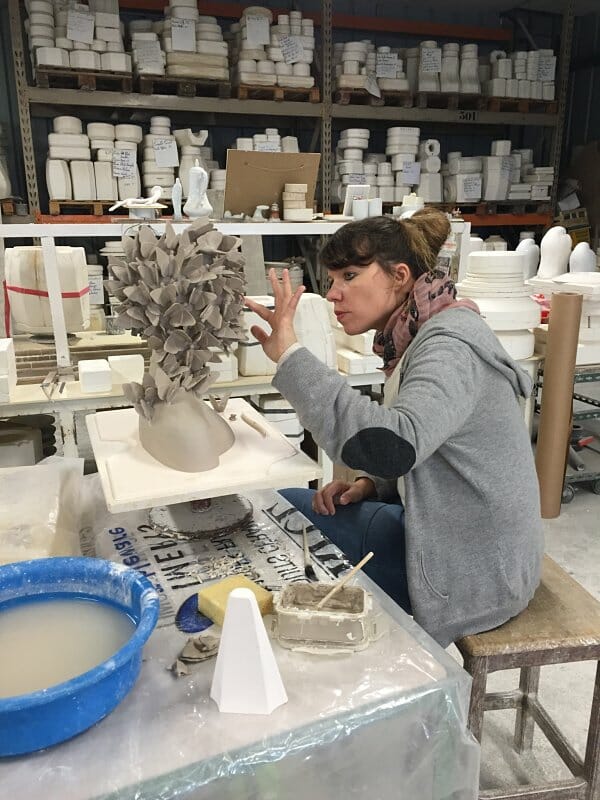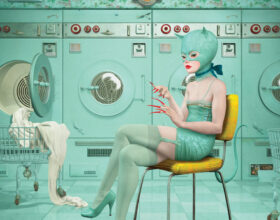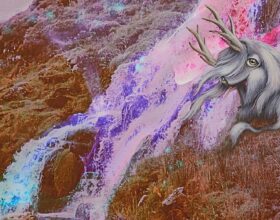Evolution is the psychological nature of human beings, even if technology has taken them away from physical nature. Yet, when our harmonious connection with Earth seems to be broken, art is acting as a repair, a sort of esthetic Kintsugi. The parallel between this ancient Japanese art of fixing broken potteries and the work of Juliette Clovis is bound to happen. Indeed, the French contemporary artist is both using the classical technique of ceramic, but she is also exploring the philosophical concept of metamorphosis.
Born in 1978, Juliette Clovis is based in Bordeaux but traveling a lot to find her inspiration from nature. Obsessed by the dialogue between tradition and modernity, she began an art residency at La Manufacture Seynice, one of the oldest Limoges porcelain factories. The Limoges porcelain, a prestigious material in France, is a fine translucent biscuit with delicate enamel, similar to the Sèvres, Meissen or Nymphenburg porcelains. An atypical material to use in art, it completes the offbeat experimentations of Clovis, who is also creating paintings with Plexiglas and vinyl.
Her recent direction toward 3D art is natural for the artist, who enjoys merging and reinventing codes. The ceramist especially focuses on a feminine universe, where women transform into hybrid creatures. Their bodies are often featuring body art such as tattoo-like decorations, created by on-glaze paintings. Furthermore, they are also covering themselves with vegetal and wildlife-inspired protuberances. These fascinating nymphs are coming straight from a science-fiction version of Ovid’s Metamorphoses. With their pure white busts and oneiric touches of colors and aspects, they are hinting to a world where humans could regain their place among natural wonders. In many dimensions, the curious and noble art of Juliette Clovis is starting a discussion full of imagination, grace and possibilities. A new stage of evolution for humanity?


